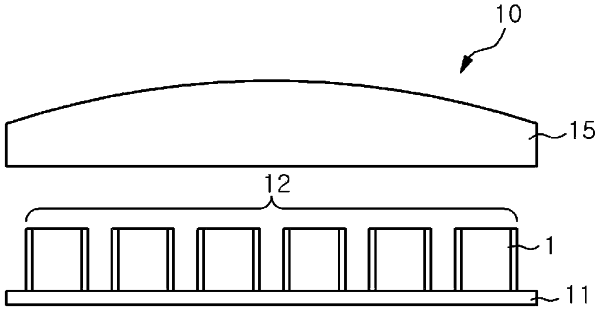| CPC F21K 9/69 (2016.08) [F21V 23/003 (2013.01); G02B 27/30 (2013.01); F21S 8/085 (2013.01); F21S 41/151 (2018.01); F21Y 2103/10 (2016.08); F21Y 2115/10 (2016.08)] | 18 Claims |

|
1. An illumination device, comprising:
a plurality of light emitting devices; and
an optical system for collimating light emitted by the plurality of light emitting devices,
wherein each of the plurality of light emitting devices comprises:
an LED chip for emitting excitation light;
a phosphor body covering the LED chip for converting the excitation light into illumination light of a predetermined color temperature; and
a light blocking layer arranged on lateral surfaces of the LED chip, the phosphor body, or both;
wherein:
a first group of the light emitting devices is arranged in a first array having first gaps; and
a first optical system is arranged relative to and in proximity to the first group of light emitting devices and configured to collimate first light emitted by the first group of light emitting devices, an optical axis of the first optical system being substantially orthogonal to the first array;
at least one second group of the light emitting devices is arranged in a second array parallel to the first array, the second array having second gaps;
at least one second optical system is arranged relative to and in proximity to the at least one second group of light emitting devices and configured to collimate second light emitted by the at least one second group of light emitting devices, an optical axis of the second optical system being substantially orthogonal to the second array; and
the first and the at least one second optical systems are arranged so that, in a predetermined distance from the illumination device, the first light and the second light are superimposed to form a substantially gap-free illumination field, and
a corresponding supply voltage is provided to each light emitting device in the first group of the light emitting devices and the at least one second group of the light emitting devices such that light emitting devices in the first group of the light emitting devices and the at least one second group of the light emitting devices are individually controlled.
|